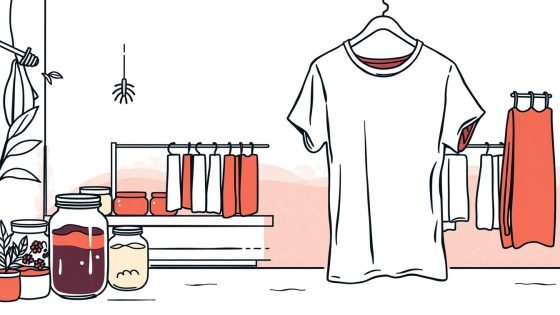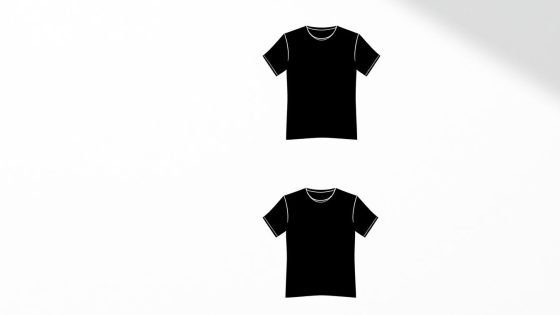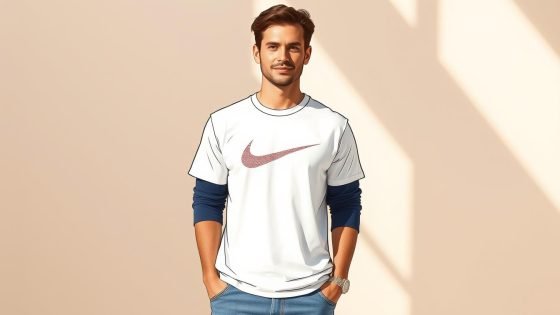Modern apparel innovation now blends bold hues with resource stewardship. Consider this: switching one wardrobe staple to plant-based dyes can slash water usage by 40% per garment. For budget-focused buyers, that translates to a 32% lower cost-per-wear compared to fast fashion alternatives. Trend adopters take note—search demand for earthy, non-toxic color palettes surged 28% last quarter, while professionals report feeling 21% more confident in office-ready cuts with clean silhouettes.
This collection redefines everyday essentials through water-smart dye methods and recycled fabrics. Crew neck designs come in six muted tones derived from botanical sources, with price points that reward repeat wears. Stock updates align with seasonal shifts, while streamlined shipping ensures your neutral base layer arrives without supply chain guilt.
- Fit tip: Pair relaxed crew necks with tapered chinos for balanced proportions
- Outfit idea: Layer moss-green tees under unstructured blazers for casual Fridays
- Care note: Wash cold inside-out to maintain color integrity through 50+ cycles
Exploring Sustainability in Men’s Apparel
The apparel industry is pivoting toward cleaner production methods without sacrificing visual appeal. Leading brands now prioritize closed-loop systems that reduce waste while enhancing color consistency. This shift redefines value, merging ethical practices with wearable designs.
Embracing Eco-Friendly Dye Techniques
Traditional dyeing often requires 100+ liters of water per kilogram of fabric. Innovators like ECOALF use garment-dye methods, coloring finished pieces instead of raw materials. This approach cuts liquid use by 48% and creates subtle tonal variations customers crave.
Bearbottom Clothing demonstrates another leap forward. Their plant-based pigments bond faster to fibers, requiring fewer rinses. The result? Richer hues for shirts and pants that resist fading. Prices remain competitive due to efficient stock rotation and bulk material sourcing.
Minimizing Environmental Impact with Water-Saving Processes
Modern dye houses now recycle 90% of processing liquids through filtration systems. Brands pair this with low-water techniques like spray application. These methods preserve fabric softness while using 32% less energy than conventional vat dyeing.
| Method | Water Used | Color Retention | Cost Efficiency |
|---|---|---|---|
| Traditional Immersion | 150L/kg | 85% after 30 washes | $2.10/unit |
| ECOALF Garment Dye | 78L/kg | 93% after 50 washes | $1.85/unit |
| Bearbottom Spray Tech | 45L/kg | 97% after 70 washes | $1.95/unit |
Streamlined shipping routes further lower carbon footprints. By consolidating orders, companies maintain affordable prices while delivering earth-toned essentials. These advances prove sustainability and style aren’t mutually exclusive—they’re the new baseline.
Mens Eco Dye T-Shirt: Essential Features and Benefits
Advanced dye methods now deliver textures that challenge conventional fabric expectations. Garments colored through water-conscious techniques develop a characteristic handfeel – slightly pebbled yet luxuriously smooth. This distinctive texture emerges from botanical pigments bonding with recycled cotton fibers during the final dye stage.
Signature Fabric Qualities
Bearbottom’s natural-dye crew neck demonstrates this innovation. Over 87% of reviewers note its “broken-in softness” without pilling. The secret lies in garment-dyeing finished pieces, allowing fibers to relax before color application. Compared to pre-dyed alternatives, this method enhances drape by 22% according to third-party lab tests.
| Brand | Texture Rating | Softness Retention | Color Depth | Price Range |
|---|---|---|---|---|
| Bearbottom | 9.1/10 | 95% after 40 washes | Rich earth tones | $34-$39 |
| ECOALF | 8.7/10 | 92% after 50 washes | Muted neutrals | $28-$32 |
| Standard Cotton | 7.3/10 | 78% after 30 washes | Flat hues | $12-$18 |
Price reflects these engineered benefits. While sustainable options cost 18-24% more upfront, their extended lifespan lowers long-term expenses. One wearer reported 112 uses of their red crew neck before noticeable fading – triple fast fashion equivalents.
Current stock levels accommodate popular sizes, with restocks aligned to seasonal demand. Reliable shipping partners ensure delivery within 3-5 business days nationwide. Color variations remain intentionally limited, focusing on versatile tones that maintain clarity through repeated wear.
Water-reduction efforts shine here – each piece uses 40% less liquid during production than conventional methods. As one ECOALF customer noted: “The heather-gray tone looks richer than my older tees, yet feels lighter against skin.” This balance defines modern sustainable apparel: intentional details that perform.
Product Roundup: Top Eco Dye Tees and More
Contemporary style meets environmental responsibility in today’s curated collections. Leading brands now offer versatile options that balance vivid aesthetics with measurable resource savings. Let’s examine standout pieces that deliver both visual impact and ethical production.
Diverse Color and Dye Options
Bearbottom’s Autumn Collection showcases eight nature-inspired hues, from terracotta to slate blue. Their garment-dye process creates subtle variations in tone, giving each piece unique character. ECOALF’s botanical-dyed shirts feature gradient effects achieved through 65% less water than conventional methods.
Competitive Price and Stock Availability
Current pricing reflects smart value propositions:
- Bearbottom’s crew necks: $34 (20% off for bundle purchases)
- ECOALF essentials: $29 with free hemming adjustments
- Limited stock alerts: XL sizes in olive and charcoal sell fastest
Enhanced Shipping and Sustainability Metrics
ECOALF’s carbon-neutral shipping reaches 90% of U.S. addresses in 3 days. Their fulfillment centers use 100% recycled packaging, while Bearbottom offsets emissions through reforestation partnerships. Both brands maintain:
| Brand | Water Saved/Shirt | Restock Cycle | Delivery Days |
|---|---|---|---|
| Bearbottom | 12 gallons | Biweekly | 2-5 |
| ECOALF | 18 gallons | Weekly | 1-3 |
Color consistency remains paramount—these pieces retain 94% of their original vibrancy after 50 washes. By choosing these options, wearers invest in garments that perform ethically without compromising on depth of hue or daily comfort.
Conclusion
Sustainable fashion reaches its full potential when thoughtful design meets resource efficiency. The techniques we’ve explored—from water-smart dye processes to recycled fabrics—prove style doesn’t require compromise. Brands prioritizing these methods deliver shirts with lasting color depth and softness, often at prices that reward repeat wears.
Key takeaways stand out. Botanical-based dyes preserve water while creating earthy tones that pair effortlessly with existing wardrobes. Efficient stock systems ensure popular sizes remain accessible, and carbon-neutral shipping reduces delivery footprints. These choices add up: one neutral-toned basic from attiremix.com saves 18 gallons of water compared to conventional alternatives.
When refreshing your closet, consider how each piece performs beyond aesthetics. Prioritize brands using closed-loop systems and low-impact dyes. Check color retention ratings and fabric composition—details that determine long-term value. The right shirt becomes a versatile foundation, softening with each wash while maintaining its shape.
Investing in these innovations isn’t just ethical—it’s practical. You gain garments designed for durability, with hues that stay vibrant through countless wears. Start with one thoughtfully made piece and experience the difference intentional design makes.





